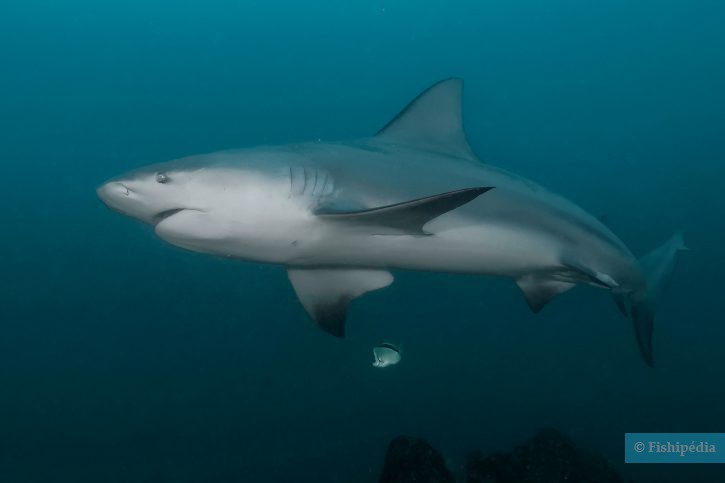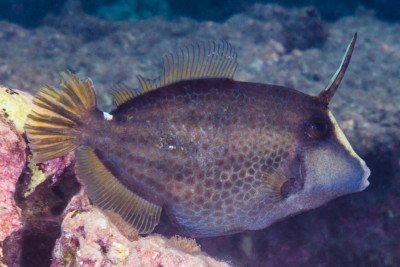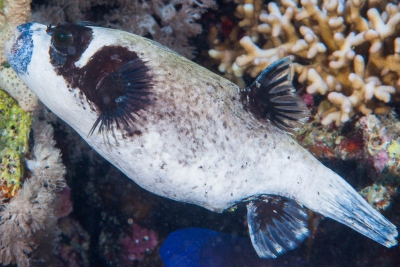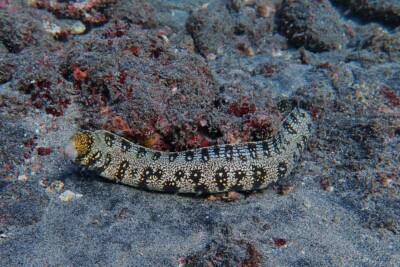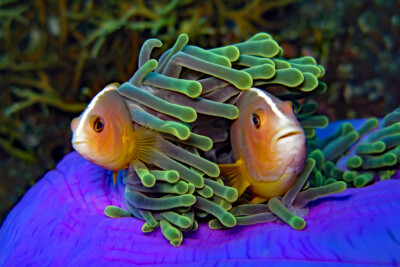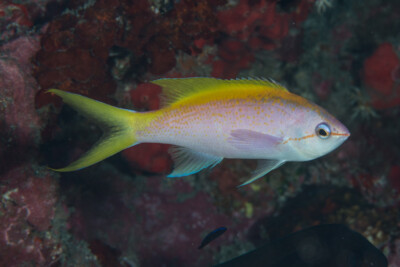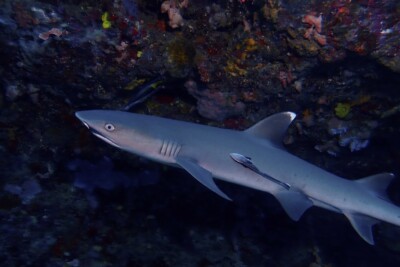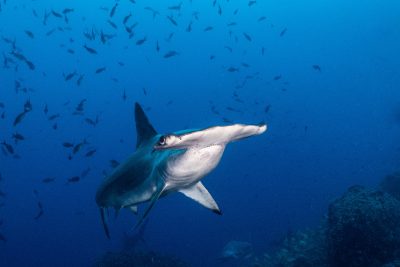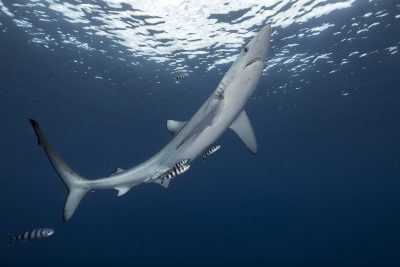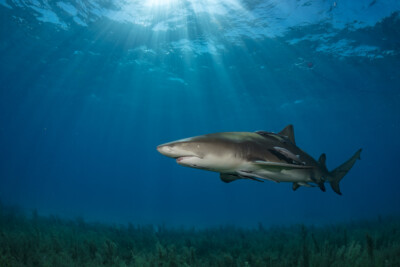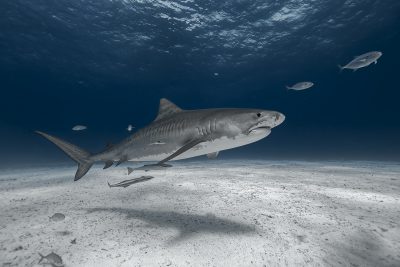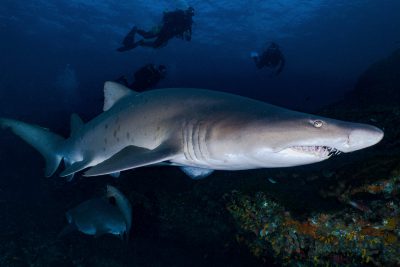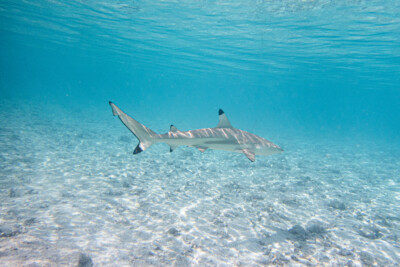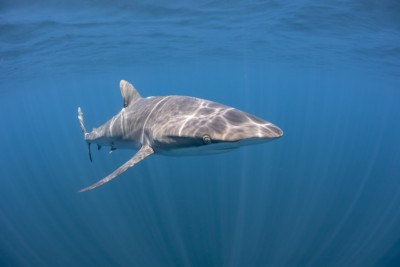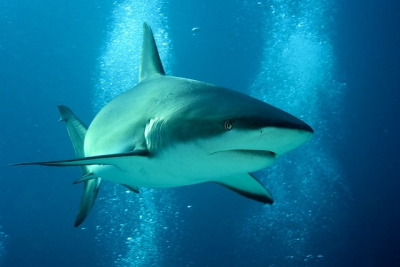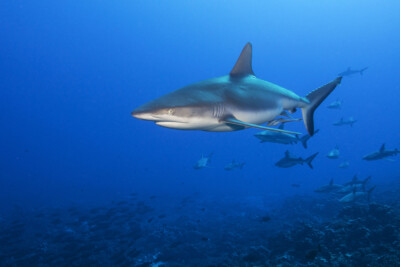bull shark
| Scientific name | Carcharhinus leucas |
|---|---|
| Descriptor | Müller & Henle |
| Year of description | 1839 |
| IUCN category (World) | VU |
| Family | Carcharhinidae |
| Genus | Carcharhinus |
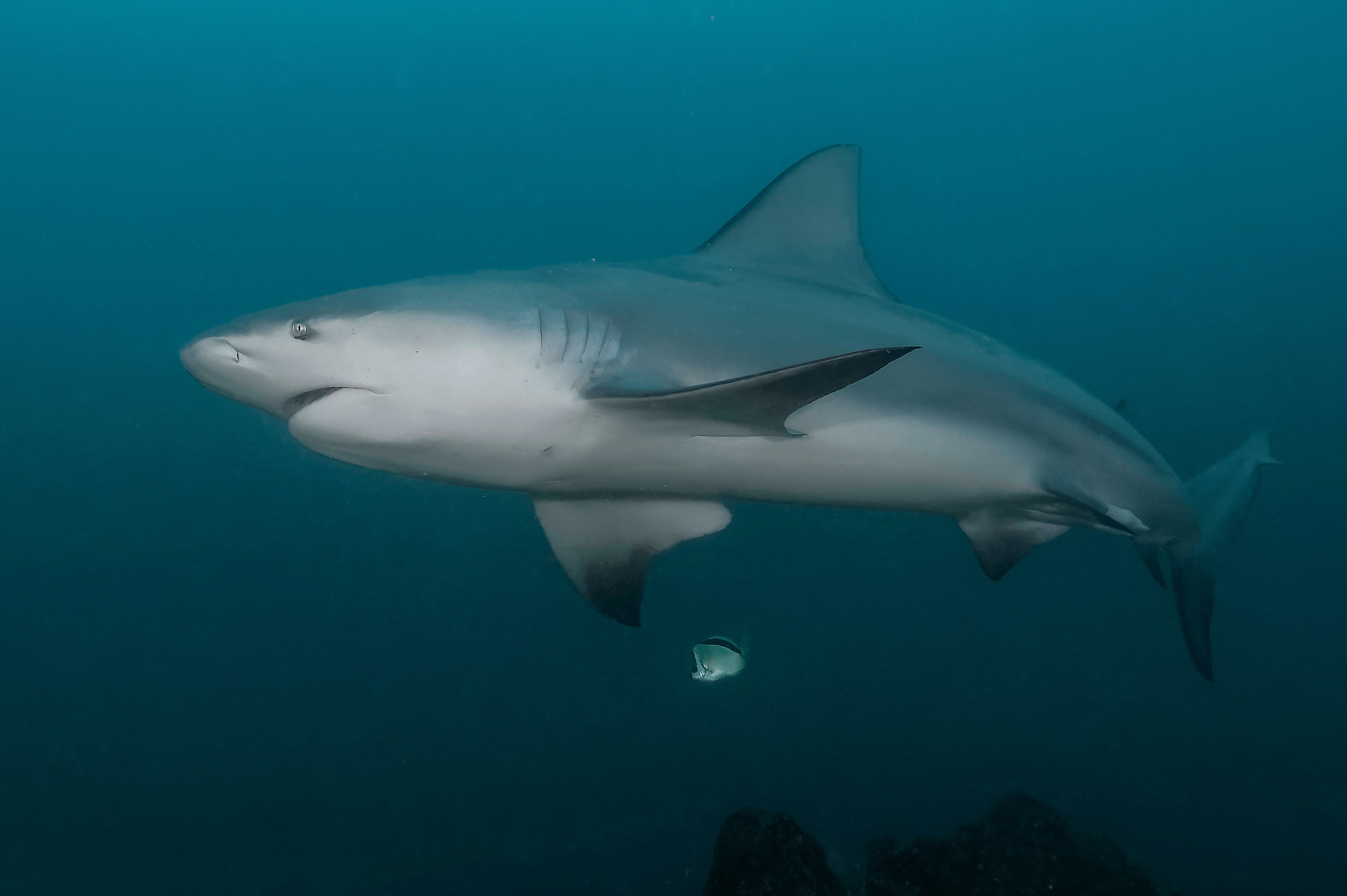

Introduction
The bull shark, Carcharhinus leucas, is found in tropical and subtropical seas and oceans.
It is one of the most feared sharks on the planet. It is notably responsible for the majority of recorded fatal attacks on humans to date.
Who is it?
Morphology
-
Type
-
Average size190 cm
-
Maximum size230 cm
-
Longevity32 year
-
ShapeOval
-
Type
-
Average size190 cm
-
Maximum size230 cm
-
Longevity32 year
-
ShapeOval
How to recognize This fish ?
The bull shark has a massive body, a gray back, and a lighter belly. The head is rounded, the eyes are small, the pectoral fins are long and triangular. The first dorsal fin is wide. The caudal fin is heterocercal.
The triangular and serrated teeth of the upper jaw and the absence of inter-dorsal crests are characteristic of this species.
Sexual dimorphism
The male has a pair of claspers, reproductive organs resulting from the modification of the pelvic fins, allowing them to fertilize the female.
Behaviour & Life cycle
-
dietcarnivorous
-
Sociabilitysolitary
-
territorialNo
-
Way of livingdiurnal
The bull shark is a solitary fish. A large carnivore and scavenger, it is one of the main predators in its habitat. It is perhaps the most aggressive of sharks. It most often hunts in murky waters, making its presence difficult to detect.
It is an active swimmer capable of covering over 180 kilometers in a day.
Reproduction
-
Reproductionovipare
-
Migratory speciesYes
The bull shark is a viviparous fish that can give birth to a dozen pups. These measure between 56 and 81 cm at birth. Sexual maturity is reached around 10-15 years at a size of 1.60 to 2 meters.
Risks for humans
-
VenomousNo
-
BiteYes
The danger can be limited by respecting a few safety and common sense rules: do not swim in risky areas, for example on beaches without a lagoon (without a coral barrier), do not go into the water if it is murky or if it has rained, do not swim at sunrise or sunset (hunting period for large predators).
Since 2013, a series of decrees have been issued regarding coastal activities on the island of Reunion. These are temporary restrictions on swimming and certain nautical activities within 300 meters of the department's coastline, except in the lagoon and in designated and monitored areas defined by municipal decree.
Today, the majority of attacks occur on surfers practicing their sport in unsupervised risky areas.
Origin and distribution

Conservation status of populations (IUCN)
What is its habitat?
Natural environment characteristics
-
Temperature24 - 28 °C
-
Depth1 - 152 m
-
EnvironmentActive pelagic
Biotope presentation
The bull shark is most often found at depths of less than 150 meters. However, it is not impossible to find this fish at other depths.
The bull shark evolves near coastlines. It is adapted to changes in salinity and is known for its excursions in rivers. A specimen was caught in Peru, over 3,000 km from the coast. It is a regular resident of estuaries and coastal coves. It seems to appreciate waters with high turbidity.
Species of the same biotope
To go further
Sources & Contributions
Participation & Validation
The Fishipedia team and specialist contributors are committed to providing high-quality content. However, although the information comes from scientific sources or testimonials from specialists, the cards may contain inaccuracies.

Adrien Falzon

Benoit Chartrer
Translation
Translation done with the valuable contribution of our translators, who make this information available to a wider audience. We sincerely thank them for their commitment.
Scientific partners
Tags
#Carcharhinidae
#Carcharhinus
#barrière de corail
#berge peu profonde
#épave
#estuaire
#fleuve
#mangrove
#plein eau
#récifs extérieurs
#rivière
#tombant
#zones côtières troubles
#shark
#Bay of Bengal
#Gulf of Mexico
#Persian Gulf
#Great Barrier Reef
#mer d'Oman
#Tasman Sea
#Philippine Sea
#Red Sea
#South East Asian Seas
#Indonesian seas
#Atlantic Ocean: North Coast of Brazil
#Océan Atlantique Est Afrique - Golfe de guinée
#Temperate Eastern Atlantic Ocean
#Océan Atlantique Est Afrique - Transition & Cap Vert
#Northwest warm temperate Atlantic Ocean
#Eastern tropical Atlantic Ocean
#western Indian Ocean
#Océan Pacifique Nord Est Tempere Chaud
#Tropical Eastern Pacific
#Western Tropical Pacific Ocean
#Oceania
#Réunion
Species of the same family
Same genus
Species of the same biotope
